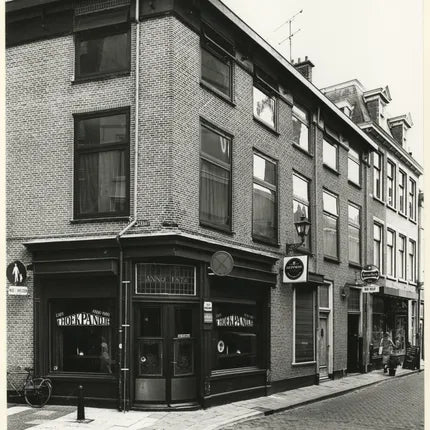
FROM LIQUOR STORE TO CAFE, A RICH HISTORY
Café 't Hoekpandje, located on the corner of Oude Molstraat and Papestraat in the Hofkwartier of The Hague, has a rich history dating back to the 19th century. The building was built in 1874 and originally served as a liquor store and wine merchant.
Over the years, the former liquor store building transformed into a popular brown café. Café 't Hoekpandje was known for a long time as a dart café, where darts players from all over the world threw their arrows. Nowadays, it is not only a place for darts enthusiasts, but also a cozy music café where live music can be heard regularly.
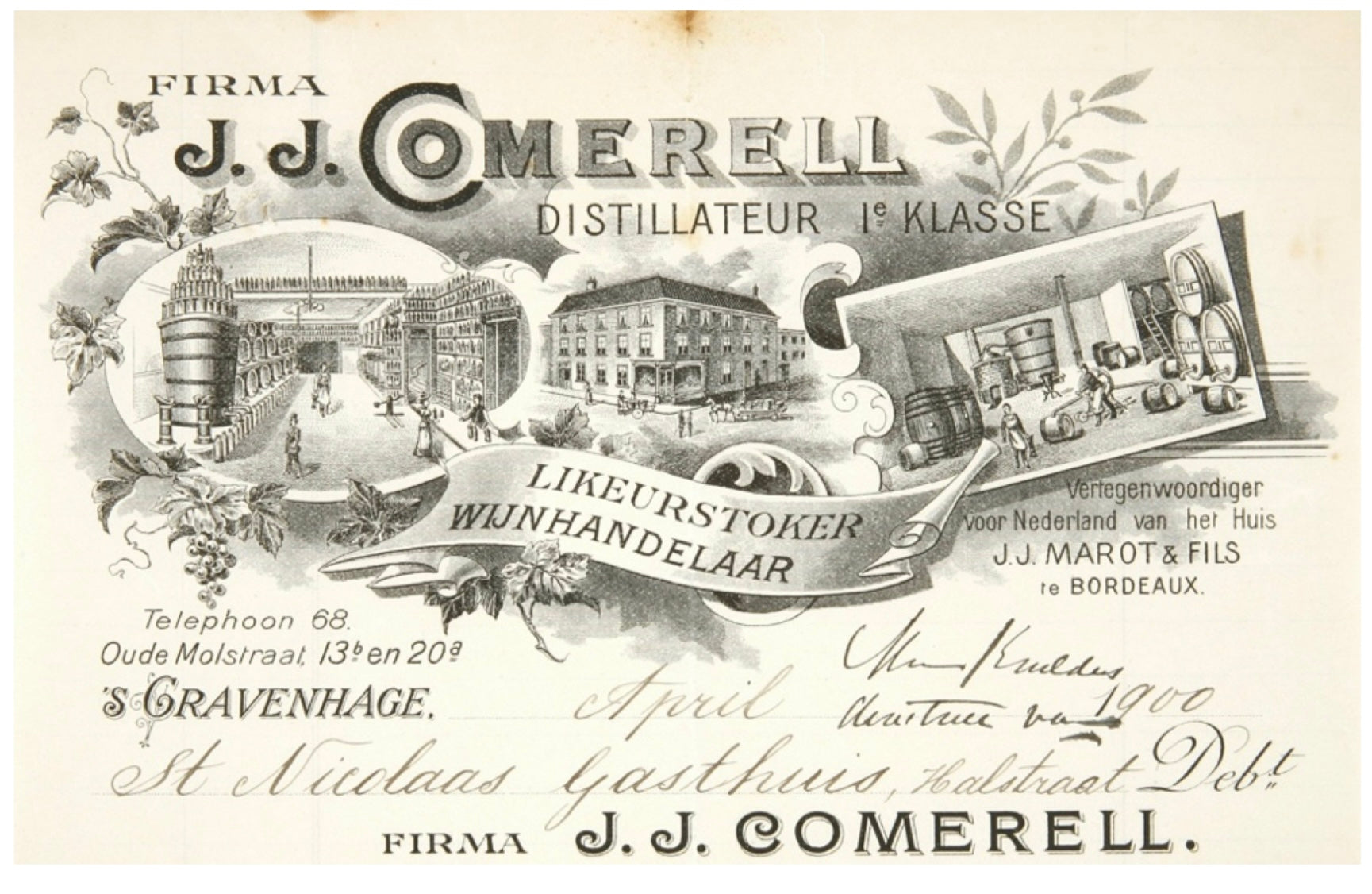
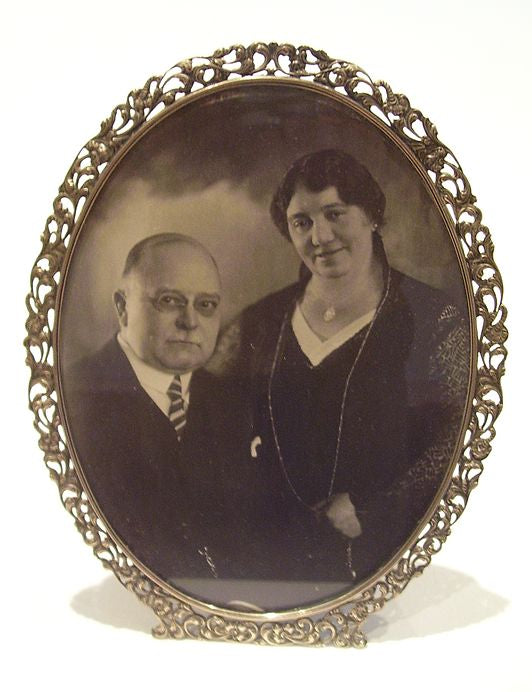
HISTORY OUDE MOLSTRAAT 13
In August 1901, Wilhelm Richters, originally from Rotterdam, bought a wine merchant and liquor store in The Hague. This company, located on the corner of Oude Molstraat and Papestraat, was taken over from the heirs of Johan Jacob Comerell (1819-1896). This wine merchant and liquor store had also had its own distillery since 1892. This distillery, called De Gekroonde Reigerkop, was located a little further along Oude Molstraat. Wilhelm Richters had already run a liquor store in Rotterdam for several years, but he had no experience with distilling gin and liqueur. The advantage of such a private distillery was that Richters, as a liquor store, was not completely dependent on large gin and liqueur producers such as Lucas Bols and Wijnand Fockink . On the other hand, such a private distillery also entailed all kinds of risks and costs that ordinary liquor stores did not have.
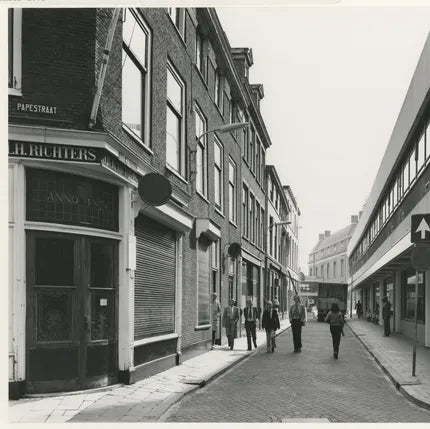
After only a few years, Richters must have realized that operating the distillery was only really profitable with much higher production volumes. From around 1910, Richters began to buy up other liquor stores in order to connect them to his company as branches. These branches were supplied with gin, liqueurs, advocaat and lemonade syrups from his own distillery and with wines and spirits that were purchased centrally by Wilhelm Richters. In 1922, Richters bought another building in the Oude Molstraat for the storage and bottling of wines. When Richters died in 1942 after a short illness, his chain consisted of 25 liquor stores. This made it one of the largest liquor store chains in the Netherlands at that time, probably comparable in size to Ferwerda & Tieman's Wijnhandel and Kasper Hiddink's Wijnhandel. However, while both of the latter companies had spread out from Amsterdam over large parts of the Netherlands, Wilhelm Richters had limited his geographical spread. Outside The Hague, Richters only had a few branches in Amsterdam and Rotterdam.
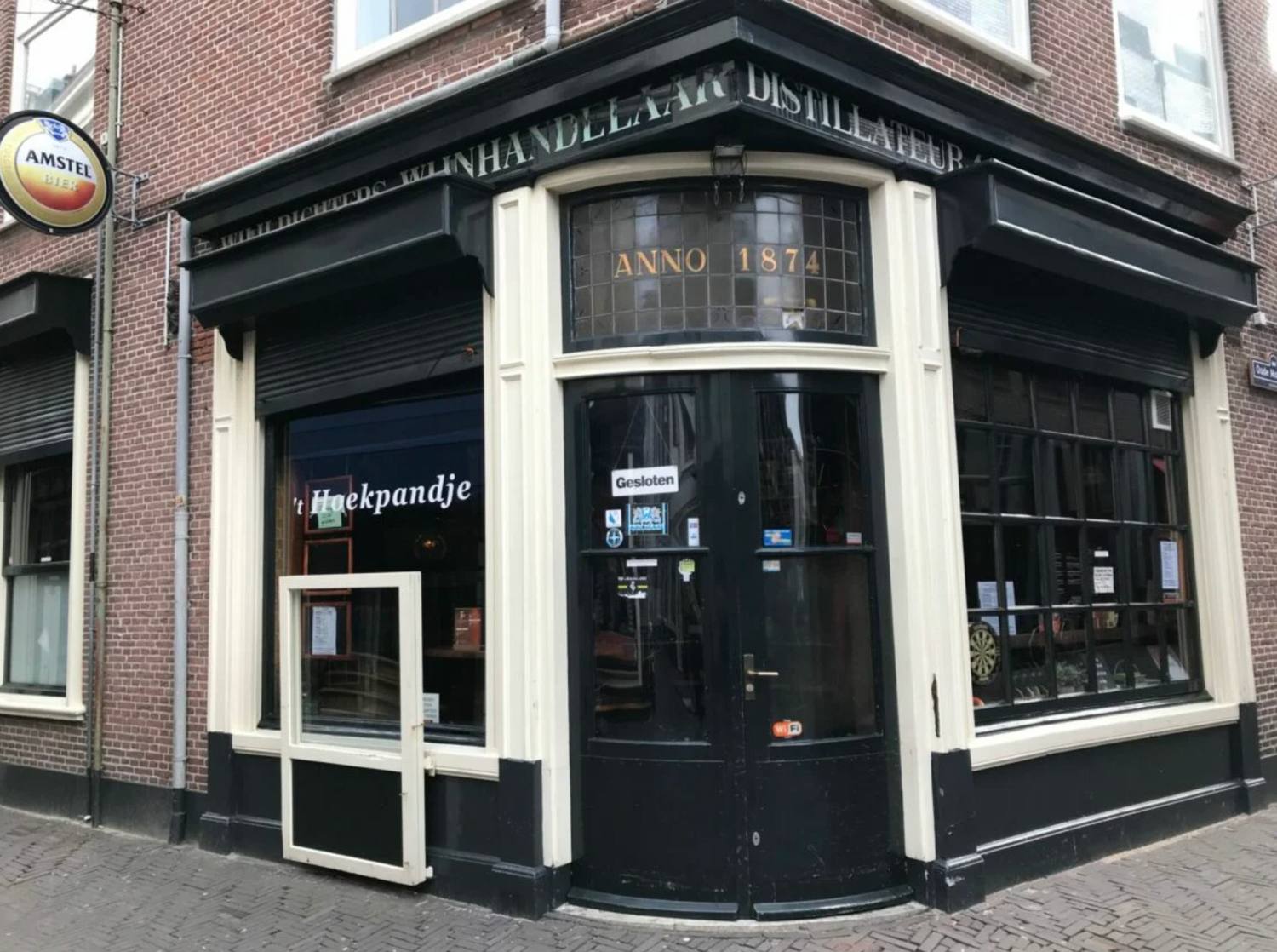
DECLINE OF THE LIQUOR STORE CHAIN
After Wilhelm Richters' death, the company was continued by five of his sons. The wine warehouse and the wine bottling plant were modernised and expanded in 1948. In the fifties and sixties, a few more branches were added to the liquor store chain. At the end of the sixties, the company got into trouble. On the one hand, an increasing share of Dutch wine sales appeared to be shifting from the liquor store to the supermarket channel. On the other hand, the sales of spirits were under severe pressure due to the arrival of discount liquor stores. After two of their younger brothers had already withdrawn from the company and a third brother had suddenly died, the two remaining Richters decided to sell the company (1975). The 32 liquor stores were transferred to the British drinks company Allied Breweries Ltd., which continued half of these branches under the formula name Wijnmart. The buildings in which the distillery and the wine warehouse were located were sold to the municipality of The Hague in 1976.
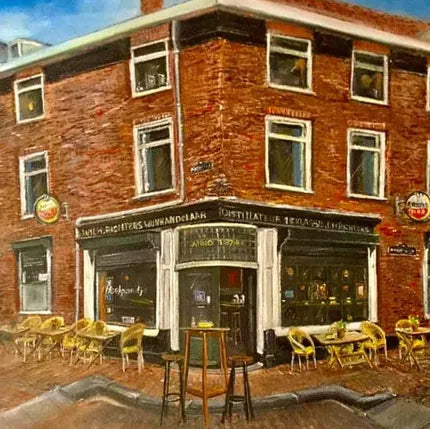
CORPORATE HISTORICAL HERITAGE
The National Liqueur & Soft Drinks Museum Isidorus Jonkers ( Hilvarenbeek ) dedicated an exhibition to Wilhelm Richters and his company from 11 November 2008 to 29 March 2009. A booklet with the same name was also published to mark the exhibition Rondom Richters. The vast majority of the exhibited objects came from a grandson of Richters and were donated to the Liqueur & Soft Drinks Museum after the exhibition. After the closure of the Liqueur & Museum (October 2015), these objects were transferred to the National Jenever Museum ( Schiedam ). The former company buildings Oude Molstraat 13 (liquor store), Oude Molstraat 20 (distillery) and Oude Molstraat 32 (wine warehouse and bottling plant) also keep the memory of Wilhelm Richters alive. Facade inscriptions, windows and numerous interior details still bear witness to the illustrious past of the liquor store and distillery.
